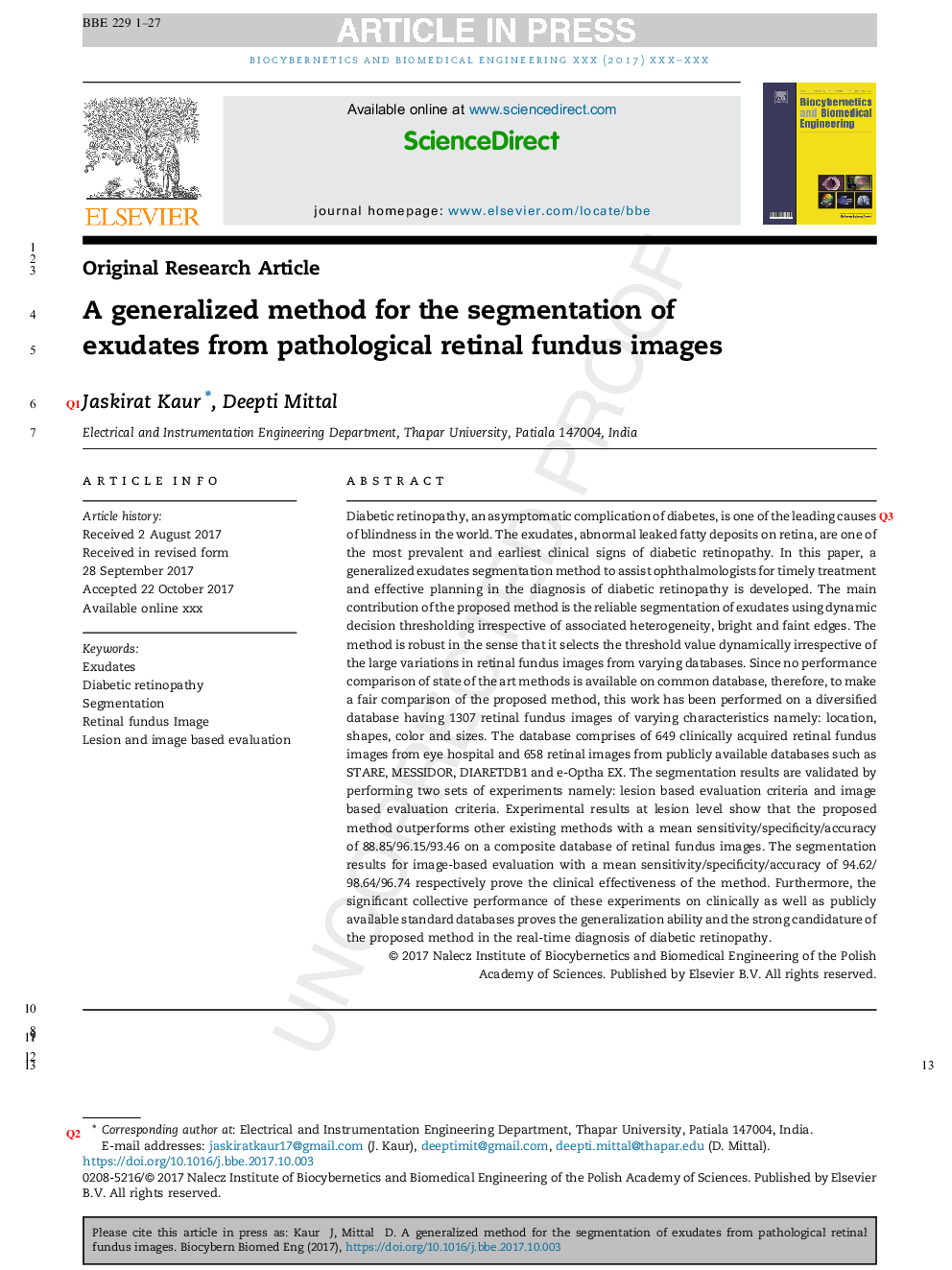| Article ID | Journal | Published Year | Pages | File Type |
|---|---|---|---|---|
| 6484178 | Biocybernetics and Biomedical Engineering | 2018 | 27 Pages |
Abstract
Diabetic retinopathy, an asymptomatic complication of diabetes, is one of the leading causes of blindness in the world. The exudates, abnormal leaked fatty deposits on retina, are one of the most prevalent and earliest clinical signs of diabetic retinopathy. In this paper, a generalized exudates segmentation method to assist ophthalmologists for timely treatment and effective planning in the diagnosis of diabetic retinopathy is developed. The main contribution of the proposed method is the reliable segmentation of exudates using dynamic decision thresholding irrespective of associated heterogeneity, bright and faint edges. The method is robust in the sense that it selects the threshold value dynamically irrespective of the large variations in retinal fundus images from varying databases. Since no performance comparison of state of the art methods is available on common database, therefore, to make a fair comparison of the proposed method, this work has been performed on a diversified database having 1307 retinal fundus images of varying characteristics namely: location, shapes, color and sizes. The database comprises of 649 clinically acquired retinal fundus images from eye hospital and 658 retinal images from publicly available databases such as STARE, MESSIDOR, DIARETDB1 and e-Optha EX. The segmentation results are validated by performing two sets of experiments namely: lesion based evaluation criteria and image based evaluation criteria. Experimental results at lesion level show that the proposed method outperforms other existing methods with a mean sensitivity/specificity/accuracy of 88.85/96.15/93.46 on a composite database of retinal fundus images. The segmentation results for image-based evaluation with a mean sensitivity/specificity/accuracy of 94.62/98.64/96.74 respectively prove the clinical effectiveness of the method. Furthermore, the significant collective performance of these experiments on clinically as well as publicly available standard databases proves the generalization ability and the strong candidature of the proposed method in the real-time diagnosis of diabetic retinopathy.
Related Topics
Physical Sciences and Engineering
Chemical Engineering
Bioengineering
Authors
Jaskirat Kaur, Deepti Mittal,
